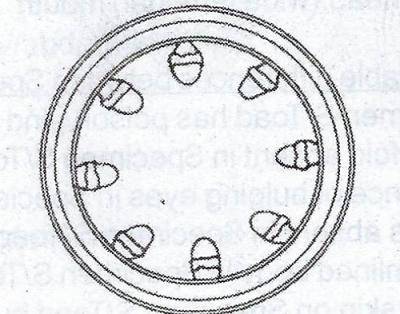
Biology
Paper 1 | Objectives | 49 Questions
WASSCE/WAEC MAY/JUNE
Year: 2017
Level: SHS
Time:
Type: Question Paper
Answers provided
FREE
No description provided
Feedbacks
This paper is yet to be rated

Paper 1 | Objectives | 49 Questions
WASSCE/WAEC MAY/JUNE
Year: 2017
Level: SHS
Time:
Type: Question Paper
Answers provided
No description provided
This paper is yet to be rated
These are the three things to do in test preparation for higher grades and excellent performance.
Scholarship in Norway universities are open for application in 2022 also for developing countries.
Good jobs available to people without a college degree, how to get good job without a college degree?
| # | Question | Ans |
|---|---|---|
| 1. |
Which of the following groups of animals do not possess a nervous system? A. Porifera B. Cnidaria C. Platyheminthes D. Nematoda
Show Content
Detailed SolutionPorifera are 'pore bearing' organisms, commonly known as sponges, are the only multicellular organisms without a nervous system. Their response to stimuli is by a contraction in their bodies. |
|
| 2. |
The structural similarities in Paramecium and Euglena are in the A. shape of locomotory organs B. blunt anterior and pointed posterior C. presence of micro and mega nuclei in both D. presence of anterior and posterior contractile vacuoles |
B |
| 3. |
Which of the following organisms cannot exist freely on its own? A. Chlamydomonas B. Amoeba C. Paramecium D. Plasmodium
Show Content
Detailed SolutionThe plasmodium is a single-celled parasite that multiplies in red blood cells of humans as well as in the mosquito intestine. Hence, it doesn't live freely. |
|
| 4. |
Which of the following cell organelles is the site for the production of ATP? A. Lysosome B. Nucleus C. Mitochondrion D. Ribosome
Show Content
Detailed SolutionThe production of ATP happens in the mitochondrion, which likewise exists in both animals and plants. |
|
| 5. |
An example of osmosis in plants is the A. movement of water through the xylem B. loss of water vapour from the stomata C. translocation of food through the phloem D. absorption of water from the soil by the root
Show Content
Detailed SolutionOsmosis is responsible for the ability of plant roots to draw water from the soil. Plants concentrate solutes in their root cells by active transport, and water enters the roots by osmosis. |
|
| 6. |
The organism that can carry out both autotropic and heterotrophic modes of nutritions is A. Chlamydomonas B. Eudorina C. Euglena D. Spirogyra
Show Content
Detailed SolutionEuglena use their chloroplasts to produce nutrients through photosynthesis. It is a dual organism as it can act both as an autotroph, making its own food, and heterotroph, feeding on other substances. |
|
| 7. |
 The diagram above illustrates a part of the human skeleton. It represents the bones of the A. upper arm B. lower arm C. upper leg D. lower leg
Show Content
Detailed SolutionThe diagram shows the lower arm which can be seen between the elbow and the wrist. |
|
| 8. |
 Which of the labelled parts of the diagram of the part of the human skeleton articulates with the head of the trochlea to form a hinge joint? A. I B. II C. III D. IV
Show Content
Detailed SolutionThe part II is attached to the humerus. It forms a hinge joint to make up the hand. |
|
| 9. |
 The diagram above illustrates a part of the human skeleton. The labelled part that provides surface for the attachment of the triceps is A. I B. II C. III D. IV
Show Content
Detailed SolutionThe triceps is a large muscle on the back of the upper limb of many vertebrates. The part III is a part of the bone that forms the triceps. |
|
| 10. |
 The diagram above illustrates the transverse section of a A. dicotyledonous root B. monocotyledonous root C. dicotyledonous stem D. monocotyledonous stem
Show Content
Detailed SolutionThe diagram shows the transverse section of a dicotyledonous stem showing its tissue distribution. |
Preview displays only 10 out of the 49 Questions